Africana Soy
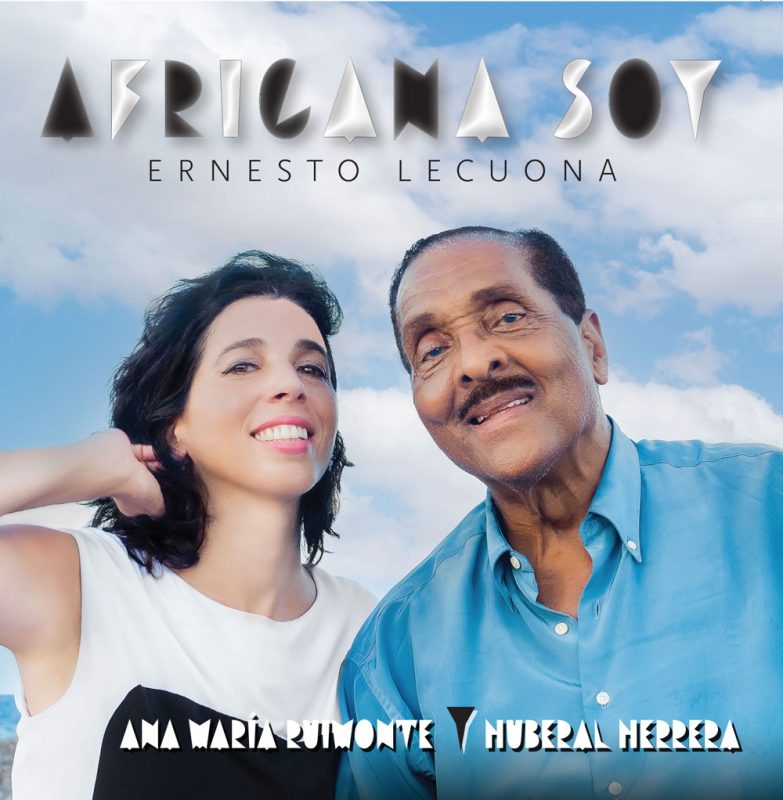
“Incorporating African & Autochthonous Rhythms from the island of Cuba”
Africana Soy contains a selection of songs and arias from zarzuelas produced by Ana Maria Ruimonte & Alan Lewine.
They are set in the milieu of the Africans in Cuba, are generally about love, and show us the discriminatory effects of slavery and miscegenation. The Cuban composer Ernesto Lecuona humanizes these people by musically illustrating their desperation and yearning for freedom, loss of homeland and family, and workplace abuse.
These stunning musical compositions incorporate African and autochthonous rhythms and melodies from the island mixed with Spanish influences such as the habanera. The zarzuelas for the musical theater by Ernesto Lecuona and the writer Sánchez Galarraga act as a reconciliatory element mirroring the feelings of those suffering. By empathy, we will recognize that we are all human being looking for a peaceful life with similar opportunities while showing respect for our differences.
5. Canto Negro
From the zarzuela “El Batey”
Lyrics by Gustavo Sánchez Galarraga (1893-1934).
Translated by Alan Lewine.
He cries for his lost land
Under the whip that lashes his back
And in the mountain at night the servant
Contemplates death by suicide.
In his bitter song
The black man shows his sadness
He sings from his heart
And of his thirst to find a love.
Under the palms he thinks
Of his distant homeland,
A country where he can no longer set foot
Where his love remains.
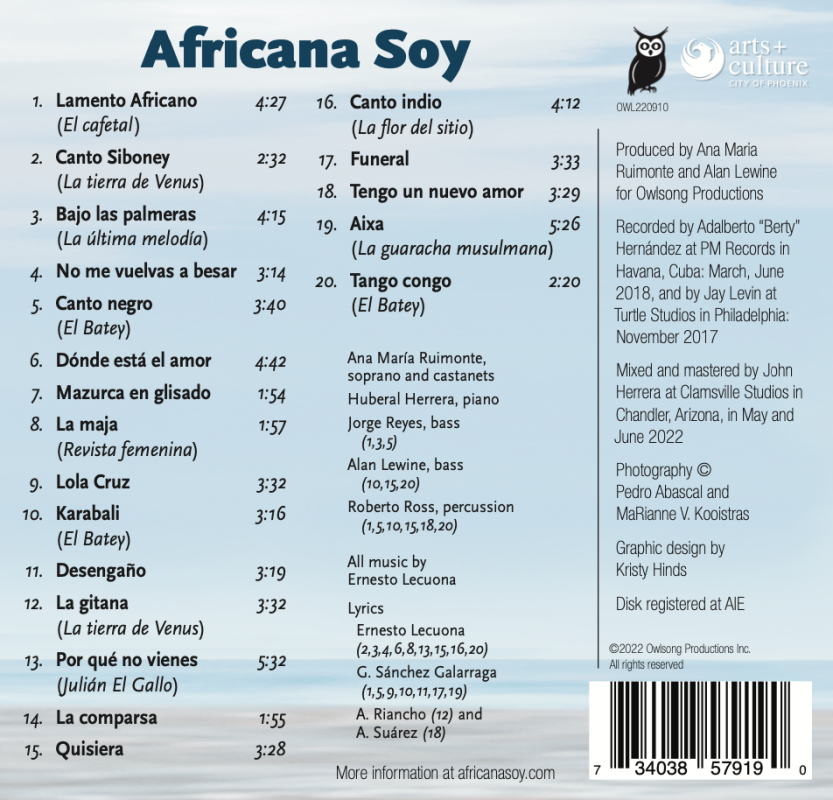
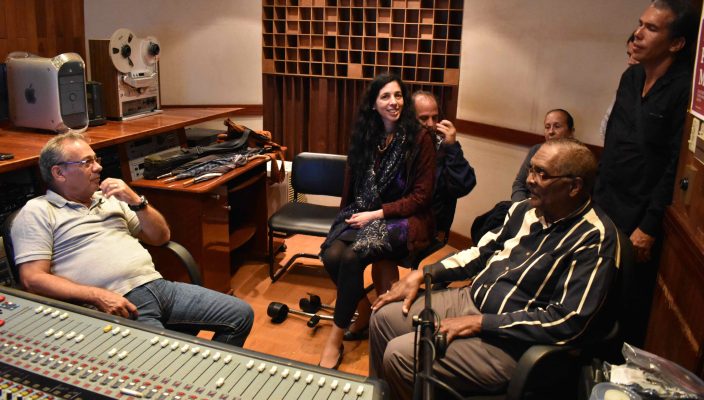
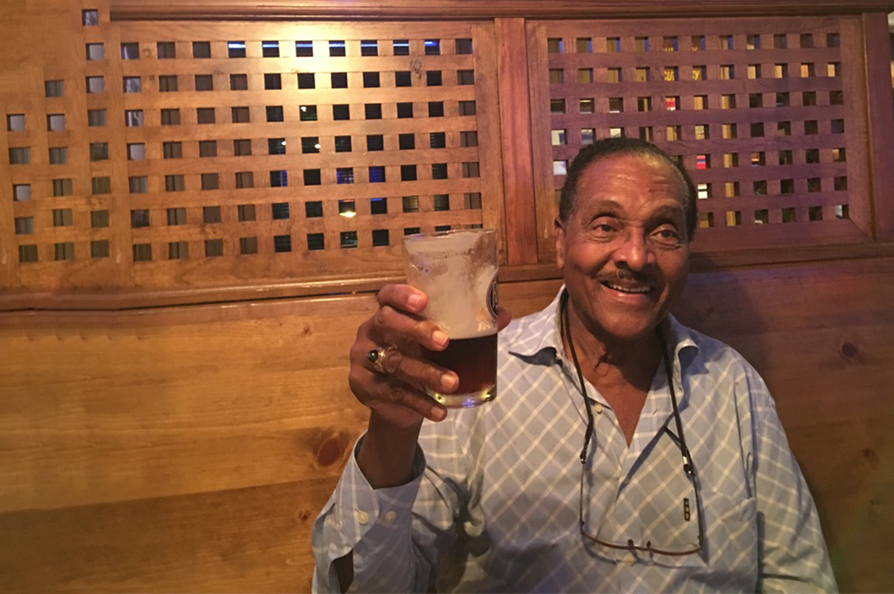
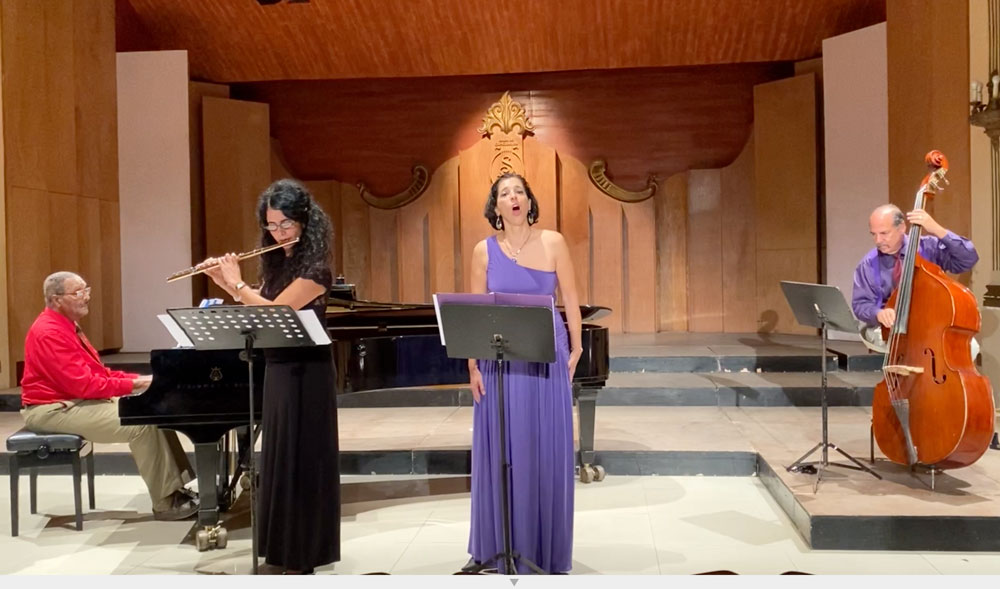
Ana Maria Ruimonte and Huberal Herrera (national award Premio Nacional de Música de Cuba for his lifetime achievements in music, 2020) performed together for the first time in 2016 at the Auditorium of the Museo Bellas Artes (National Museum of Fine Arts) in Havana with the concert Rosas para Lecuona of compositions by Ernesto Lecuona. They have spread the music of Lecuona in Santiago de Cuba, Cienfuegos, Matanzas, in Cuba, New York, Baltimore, and Philadelphia, in the U.S., sometimes joined in concert by renowned Cuban flutist Zorimé García Caturla and bassist Alan Lewine, and in Madrid in Spain with Cuban-Spanish pianist Alberto Joya, and clarinetist Flavia Méndez, American bassist Alan Lewine, Spanish flutist Antonio Arias, and the Spanish percussionist Víctor Monge.
Slavery, Miscegenation and Liberation: Cuban Classic Music
Sixteenth Century Havana was the sea capital of the Americas connecting to Europe primarily through Seville in Spain. Through Havana songs and dances came and went from Andalusia, different parts of America and Africa. It was in Havana where this music melted with the most heat to create colorful of rhythms and melodies, (Alejo Carpentier).
But, during the 19th century and the decline of the Spanish empire, the island of Cuba came to to be considered decadent, a sinful place where people of mixed race were born and sometimes regarded an unstoppable epidemic that would produce the destruction of the white race and, with it, the island. For such reasons, many Cubans were condemned to live segregated, on the margins of law under a racist system.
“The mulatto was the symbol of that racial mix, the proof of the rebellion, of the transgression of the prohibited,” (Jorge Camacho). Her destiny would be always tragic because she was seen as a libertine, only looking to mix with white men just to purify her blood. Nonetheless, by the 20th Century, 99% of the Cuban population were of mixed race or mulato.
At the end of the 19th Century, a movement for freedom surged throughout the Americas, headed by poets and journalists such as Walt Whitman, José Martí and Sánchez Galarraga. Walt Whitman, recognizing the mix of cultures in the city of New York, considered that in the universe opposite forces tended to reconcile at the end. And he developed his theory of the mirrors, where the true artist stares at the mirror sitting next to another person; only the true artist is able to enlighten and guide the public to discover the soul of things: the true reality.
This reconciliation was reflected in Cuba through the team of Ernesto Lecuona and Sánchez Galárraga. The reconciliation of cultures produced the zarzuelas and songs where the new identity of the mixed race population was recognized as a human being, not only white nor black, but the result of the melting of both. Their physical, personal and sexual identity showed in the Musical Theater. Lecuona, with his more than 600 compositions, including many songs and zarzuelas, left us a great musical heritage , still wonderful to hear as a manifestation of a deep sentimental fusion resulting from the mix of diverse cultures and identities that produced mixed-race, or Mulatto Classical Music of great interest.
The cultural enrichment comes from the fusion of the traditional rhythms and melodies from Black Africa, with the music of concert, popular, dance and belcanto originally from Europe and Spain, together with the influence of musical theater from the United States. “These dances are full of pure rhythm; if the rhythm is not black, it will be guajiro or creole… it is the essence of our thoughts, our way of walking, of talking, because Lecuona was always looking for the expressive reach of the culture that surrounded him.” (Félix Guerrero)
When we put our eyes in the real world of our days, we ask ourselves if things have really changed. We do not necessarily recognize equality. Discrimination persist in this society (communist, monarchist, or capitalist), favoring the differences and segregation of the races. Are we really looking straight or are we hiding our heads in front of those situations we see as unequal? Reciprocally, this situation of abuse has generated in the current mixed-race society a similar response, with the consequence that inequality and social disunion tend to perpetuate in time and extend in space: isolation of the people of mixed race. In consequence, we can see that in the cities of the United States there is a system of colonies and racial groups that get together to protect themselves. Even though all the existent ethnicities (White, Latinx, Asian, Black, Indian, etc.) may have superficial differences, the lack of recognition of common humanity among them produces reduced groups living in bounded areas, often limited to similar job positions, finding refuge in separate churches, and conserving separate traditions and ideologies, to accept what they have by mean of the culture of conformism. Social groups have a tendency to create closed spheres for themselves to protect their identities and their own communities, resulting in Racial Segregation.
Following the steps of Walt Whitman’s theory of the mirrors (discussed above), the collaborations of Lecuona with Sánchez Galarraga enlightens us and shows us the soul of people of mixed races, and we perceive and recognize that our souls are the same as theirs, without differences, because, as Marion Anderson said, “soul is colorless.”
Just so, we, as interpreters, can find ways to improve the current social situation. Simply by touching hearts, showing empathy with the difficulties and the triumphs of those people from the past that were brought to the American continent by force; that were ripped from their lives in their own lands to bring them to a new world where they were treated as animals, without respecting them or their customs. Those who belonged to the ruling society submitted to the tyranny of money, a society that only considered the reported economic benefit, and placing it as the main interest over the human one. Indeed, this society is defined by the supposed superiority of the so-called “white race.”
To achieve equality and liberty it is necessary to fight every day for it. Music, dance and the arts are ways to reach human hearts and the minds to build a more fair and free society, opened to new cultures, ideologies and without false ranking of individuals by race or ethnicity. We can use Musical Theater to express our feelings as human beings living a natural life. We will discover that we all look for survival and a life with peace and justice and equal opportunity. That is what we need to enjoy equal rights and opportunities. The artistic expression can help us to respect each other and to recognize our similarities and differences.
With “Slavery, Miscegenation and Liberation: Cuban Classical Music”, through music for piano, lyrical zarzuela and songs, with their melting pots of influences, we learn about the souls of those who are of mixed race, African origin and Native Americans. Our first program, featuring the US premiere of the film “Huberal”, we can hear the piano music and admire the musical enrichment in rhythms, melodies and other expressive sources in the compositions by Ernesto Lecuona under the hands of one of his finest interpreters.
“Huberal Herrera has dedicated a huge part of his life to the study, performance and dissemination of the piano music of Ernesto Lecuona. He rescued compositions such as While I Was Eating the Cat Meowed, Neither You nor Me, The Crinoline, Tap Dancing and Guajira, Prelude in the Night, and from fragments Huberal reconstructed the important symphonic poem Del Manglar, for piano and soprano with Orchestra. During April and May in 1995 in Spain, Huberal recorded a three CD collection titled ‘Ernesto Lecuona: Obras para piano’, released by Decca in 1996, containing an extensive and representative selection of the piano pieces of the composer”, (Jesús Gómez Cairo).
For our second program, in “Africana Soy”, drama alternates with comedy, in the style of Spanish zarzuela, the ever-popular style of operetta or musical theater originating in the 17th century. We feel appreciation, tender and compassionate for the characters as a consequence of the discriminatory and abusive situations that black slaves or beautiful mulattos are sufferings. “Sánchez Galarraga cultivated tasteful humor, in the mouth of secondary characters masterfully created by his pen.” (José Ruíz Elcoro).
